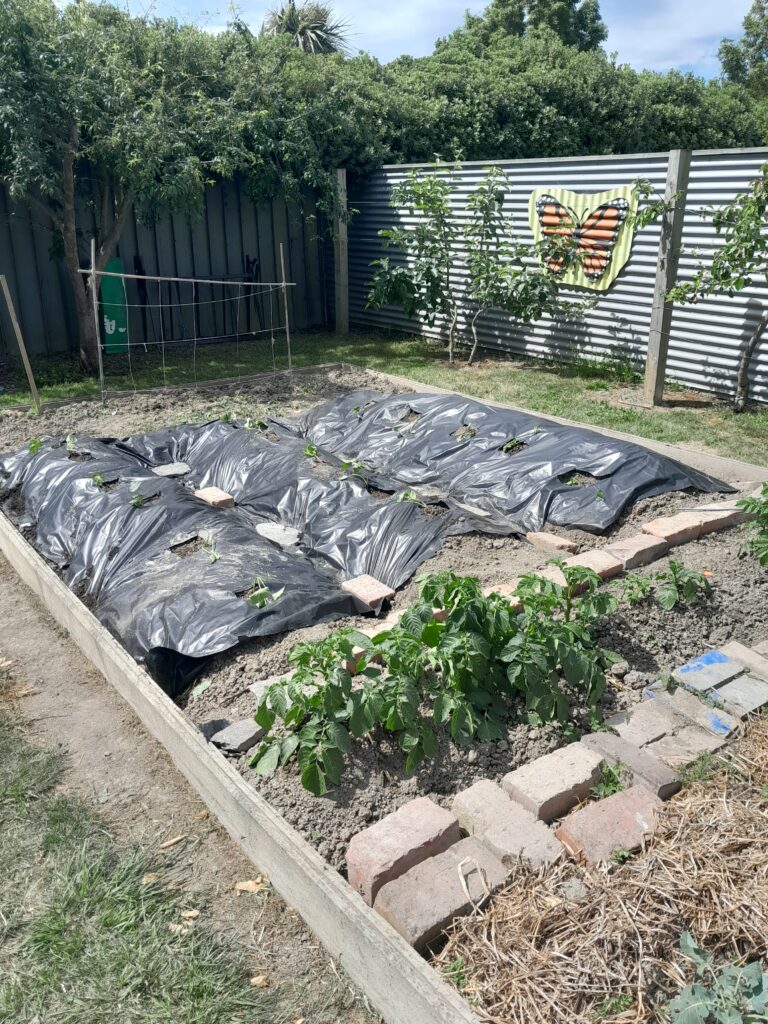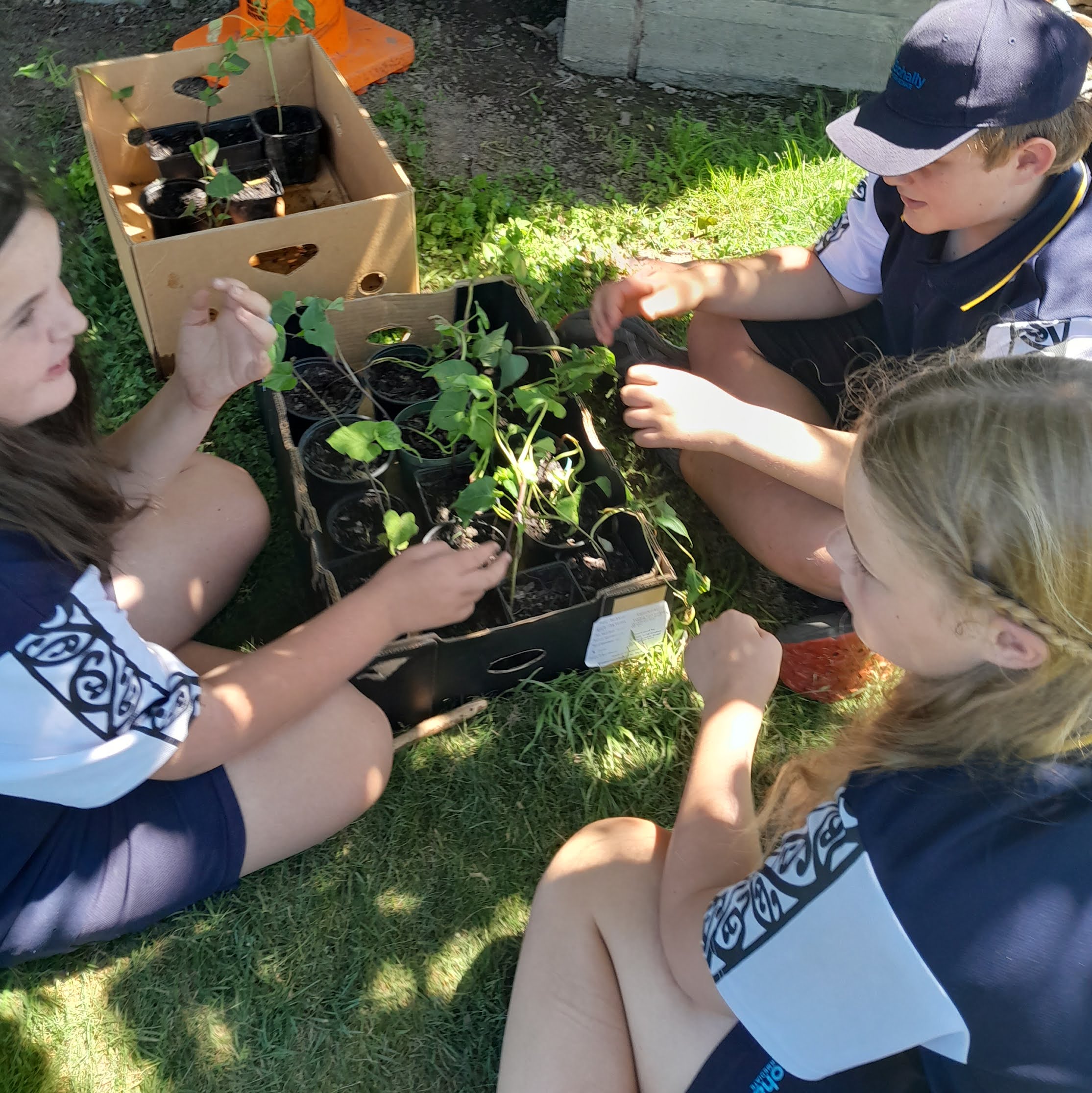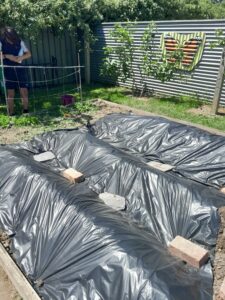Kumara planting at Bohally Intermediate
Students from the KEGs (Kids Edible Gardens) were keen to grow kumara to share with the school at their annual hangi next year. It started a journey of discovery and learning as they prepared kumara to grow tipu in term 3.
They joined forces with Reuben Molnar from Te Whatu Ora. He had worked with students from Marlborough Boys College growing kumara at the Marlborough Community gardens last year. The boys harvested over 90 kg of kumara! The Bohally School students were interested to hear from Reuben how they had used Māori Mātauranga that Reuben had learnt from mana whenua to grow their kumara.
Unfortunately the method the Bohally School students had used to grow tipu had not produced tipu of the right size. They would not be ready in time for planting by the full moon. Luckily Reuben was able to share the tipu he had grown. He also gave some advice for how they might go about it next year.
Prior to planting day, the students dug lots of compost into their māra kumara. On the day itself, Reuben joined them as they created three rows of mounded soil. The mounds ensure better drainage so that the soil stays drier and warms quickly. Black polythene over the mounds helps to create extra warmth and suppress weeds.
Having discovered in their research that there were two ways to plant the mounds – one row of tipu along the top or a row of tipu along each side of the mounds – they students decided to try both and cut holes for the tipu accordingly.
Reuben shared how to plant the tipu in a J. Laying the roots along the base of the hole before bending the shoots gently upward to sit above the soil. Once the planting was complete, the students sung waiata to the tipu, encouraging them to grow strong. Reuben then told stories of where and how kumara came to be grown here in Wairau.
The students are excited to see how their crop grows over the summer break. They are hoping all the effort and care they put into the planting will pay off with an abundant harvest for their hangi.





